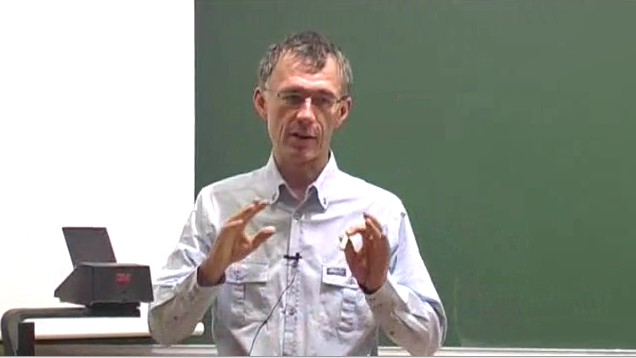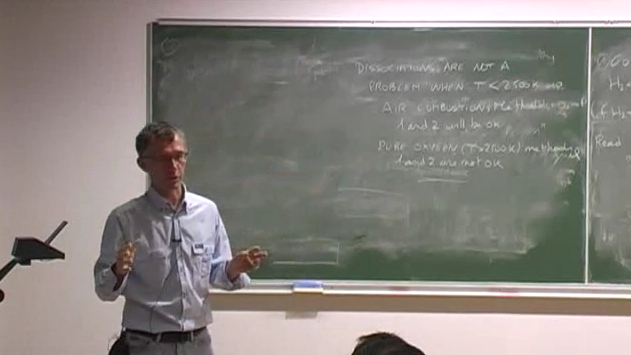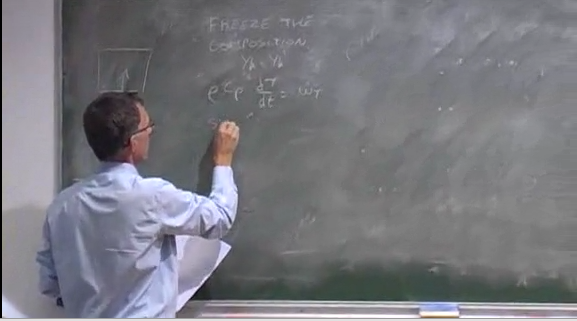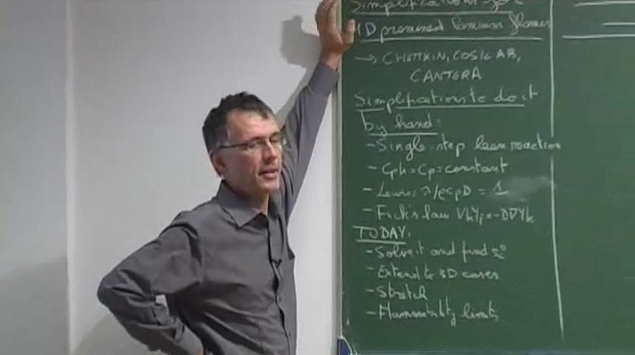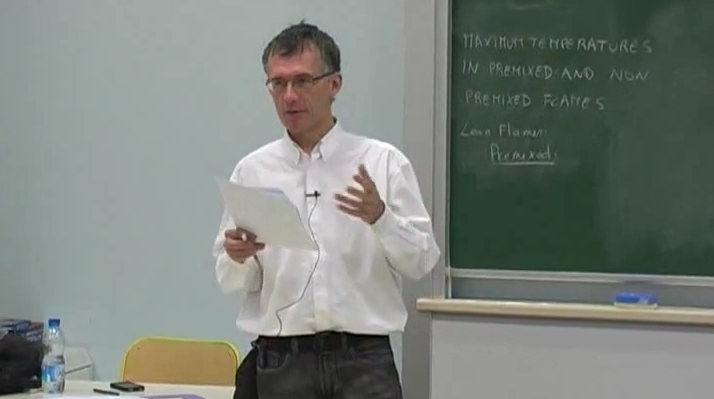eLearning@Cerfacs - Open Online Courses
Recorded Master courses
Introduction 
Keywords: Global energy market and combustion. Combustion and climate change. Optimization. Combustion instabilities.
Basic notions: stoechiometry, reactions, species
Computation of adiabatic flame temperature
Definition of state variables, the state equation, conservation of enthalpy, how to evaluate flame temperatures, effects of dissociations.
Conservation equations for combustion (part 1)
The conservation equations for reacting flows. How many variables ? Which equations ? A simple method to express conservation laws in compressible formulations. The partial differential equations solved in all combustion codes: continuity, momentum. The kinetic energy equation.
Conservation equations for combustion (part 2)
The conservation equations for reacting flows. The partial differential equations for species. The diffusion velocities. The reaction terms. Arrhenius chemistry and complex chemical schemes. The Chemkin format. The energy equations and methods to construct all associated equations for enthalpy, total enthalpy, sensible enthalpy, temperature. Simplification for low-Mach constant pressure deflagrations.
Autoignition
The first and simplest computation for reacting flows. Autoignition times in a fully premixed gas (zero dimensional problem depending only on time). Link between ignition time and activation energy. Effects of heat losses on autoignition. Crossover temperature.
Premixed Laminar Flames (part 1)
The equations for a low-speed one-dimensional laminar premixed flames. Why is the premixed flame the most classical combustion configuration ? Differences between deflagration and detonation. The premixed flame as a 1D stationary problem in the reference frame of the flame. Why this problem is an eigenvalue problem ? One dimensional codes for laminar premixed flames: Cantera, Chemkin, Cosilab. Flame thicknesses. Why we need to solve these equations by hand ? Additional assumptions to obtain only one differential equation for temperature.
Premixed Laminar Flames (part 2)
Full analytical resolution for the premixed laminar flame problem using the Echekki Ferziger simplification for the reaction rate, flame thickness and flame speed. Why the flame speed depends both on chemical constants and molecular diffusivities. Displacement speed, consumption speed, the Bunser burner, flammability limits, effects of stretch.
Diffusion Flames (part 1)
Laminar non premixed flames. The mixing lines, passive scalars with and without reaction, the mixture fraction, the infinitely fast chemistry limit, flame structure in z space.
Diffusion Flames (part 2)
Differences between premixed and diffusion flames. Full resolution for the unsteady unstrained flame and for the one-dimensional stretched flame. Integrated reaction rate in a diffusion flame. Limits of the infinitely fast chemistrry assumption.
To go further
- Online training sessions
- Face to face training sessions
- Wide interest mini-seminars
- Training newsletter subscription
- Our YouTube channel
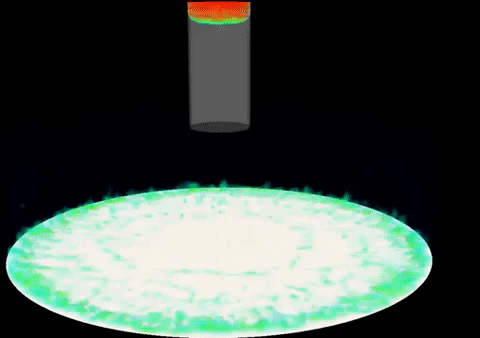
To contact us
Phone: (+33/0) 5 61 19 31 31
E-mail: eLearning@cerfacs.fr
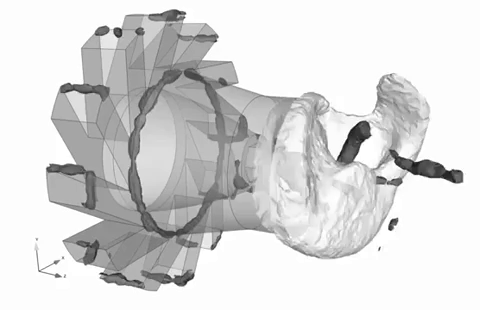
Live Visitor Counter


